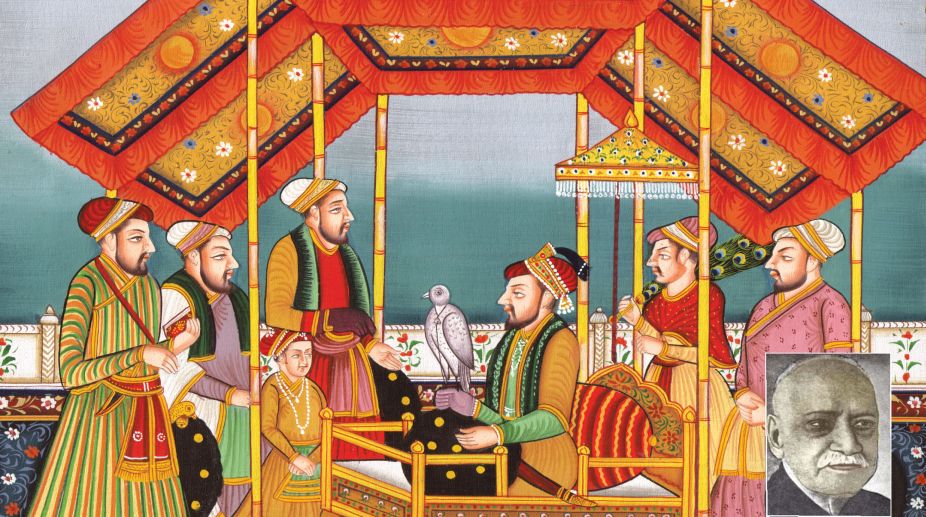Indian history has evolved mainly through four phases ~ the Vedic period; the Buddhist era; the Muslim period; and the British era. In its own way, each period has contributed to India’s development.
But there is a marked difference between the pre-Muslim and the Muslim period. In the earlier periods, the foreigners who came to India were assimilated within the loosely constructed Hindu society, but after the victorious entry of Muslims no such assimilation took place.
Advertisement
The Muslim faith in monotheism compared to the polytheism of Hinduism was totally incompatible both with Islam and Christianity. Inevitably, even though they lived side by side for hundreds of years, the separateness persisted.
The task of our age is to build an enduring edifice between the two by accepting the major differences and cultivating a code of mutual trust and peaceful existence.
In this endeavour towards integration, which might provide an essential impetus, it is imperative to recognise the valuable contribution that Muslims have made to enrich our heritage.
Sir Jadunath Sarkar (1870-1958) has chronicled ten benefits of Muslim rule in India ~ (1) rebuilding trade relations with the outside world by building India’s navy and developing overseas trade; (2) a unified administration to maintain peace in the entire empire; (3) rule by a king and implementation of a unified administrative system which led to common thinking in work, trade and even in the way of living itself; (4) establishment of uniform social behaviour both in dress and other habits; (5) development of Mughal art which blended the art form of the Hindu period ~ mainly the Ajanta style ~ with the modern Chinese, thus lending a new direction and beauty.
The influence of Hindu art was accepted and is termed as Rajasthani art. In the field of architecture, the contribution is immense. Even Hindu kings followed the style.
The Muslims also brought with them new industries like shawls, muslin, galicha (carpet), stone work and other fine metallic works including gold and silver; (6) to develop a lingua franca. Urdu was developed for the common people. However, for hundreds of years, no literature, no official work and court verdicts were written in Urdu as Persian was the official language.
Both the Hindus and Muslims used it as the official language. This was also followed in many friendly Hindu states of the Mughals. It was a great national unifying force. In 1837, English replaced Persian as the official language; (7) the eclipse of Sanskrit and the peace and prosperity provided in the Muslim period (Labore was the richest city in the world) led to the development of new languages such as Hindi, Bengali, Assamese, Punjabi and Marathi.
Literature flourished in each of these languages; (8) within Hinduism sectoral developments of belief in one God and rise of Sufism developed; (9) the Muslims cultivated the writing of history. Al Baruni (973-1048) remarked that Indians have no record of history as the pre-Muslim historiography was based largely on oral tradition; (10) there was a marked improvement in warfare and the general development of civilisation.
Sir Jadunath has pointed out that the 200-year-long Mughal rule in the entire swathe of North India and part of the South led to the development of one language for the government’s use, one common administration, currency and language, all of which were important for national integration.
Travel was easy both because of security and convenience. The cumulative effect of these factors led to a feeling of oneness in which nationalism could be conceived.
A new form of art evolved known as Indian art, and this transformed the art and craft of painting. The trend culminated during Shah Jahan’s reign (1592-1666) when all the earlier traces of Chinese influence disappeared.
But it was during Aurangzeb’s rule (1618-1707) that the tradition met its eclipse because of lack of state patronage, relentless warfare and consequent drain of resources and overall moral decline.
In sculpture, the imprint from the slave dynasty to the Mughals was unquestionable. In literature, there was a flowing in all the newer Indian languages and the best example is Tulsidas’ Ramcharitmanas (1574) written in Hindi.
Sir Jadunath makes an important point, specifically that even after the establishment of India’s relations with the outside world, the Hindus could not derive much advantage because of the prevalence of the caste system.
He also mentions Akbar’s realisation that in all religions there is always an element of truth and if this is imbibed then a peaceful religious order was conceivable. Sir Jadunath calls it ‘universal toleration’.
The administration was separated from religion and all the citizens, irrespective of their faith, enjoyed equal rights. Akbar preceded the European evolution that began after the French Revolution.
As such, he was an outstanding nation-builder. However, Sir Jadunath has also pointed out that Akbar (1542-1605) realised that if his successor was not competent and if there was no educated, honest and competent bureaucracy, the great ideals cannot be sustained.
In the subsequent development, indeed for the next 200 years, there was no attempt to introduce universal education, the printing press and newspapers. Sir Jadunath has lamented that in spite of Akbar’s earnest efforts, progressive ideas were not encouraged.
India lost out to Europe because it stagnated, whereas the latter effected a quantum jump in the quest of knowledge and industrial development. This, in large part, accounts for British domination.
It is interesting to note that both Raja Rammohun Roy (1772-1833) and Sir Syed Ahmed Khan (1817-98) concurred with this view and advocated the introduction of modern scientific and English education in India.
However, the cardinal importance of a prolonged period of Muslim rule and its immense contribution to our composite evolution must not be forgotten.
In building a proper and enduring understanding of our common heritage, Sir Jadunath’s monumental contribution remains unparalleled. On his 60th death anniversary, it is necessary to revisit his ideas as an important contribution to our nation-building exercise.
The writer is a retired Professor, Department of Political Science, University of Delhi.











